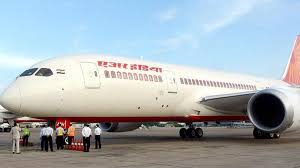Air India Adds 174 New Weekly Flights in Winter Schedule to Boost Connectivity
New Delhi, October 15, 2025 – Air India has unveiled a major expansion of its Northern Winter 2025 schedule, introducing 174 new weekly flights on key domestic and short-haul international routes from October 26, 2025. The move is part of the airline’s strategy to meet growing travel demand, especially during the winter season when passenger traffic traditionally increases.
Major additions and route extensions
The new flights, operated using Air India’s single-aisle aircraft fleet, will primarily strengthen connectivity within India and to Southeast Asia. Short-distance international upgrades:
- Delhi – Kuala Lumpur: Frequency will increase from 7 to 10 flights per week from November 15, 2025.
- Delhi – Denpasar (Bali): Similarly, the service will be increased from 7 to 10 weekly flights, but starting from December 1, 2025.
Domestic expansions:
Several existing routes within India will see increased frequencies and new services:
- Rajasthan:
- Other states and routes:
- Delhi-Indore: 3 → 4 daily flights.
- Delhi-Bhopal: 2 → 3 daily flights.
- Mumbai-Indore: 1 → 2 daily flights.
- Mumbai-Bhuj: 1 → 2 daily flights.
- Delhi-Rajkot, Delhi-Varanasi, Delhi-Raipur, Delhi-Port Blair, Delhi-Aurangabad, Delhi-Guwahati, Delhi-Nagpur, Mumbai-Dehradun, Mumbai-Patna, Mumbai-Amritsar – all will see incremental frequency boosts such as 1 → 2 flights or 2 → 3 flights per day.
Why the Expansion?
The decision comes amid growing demand for both domestic travel (festive seasons, tourism, business travel) and international travel, particularly to Southeast Asia.
Moreover, this winter schedule expansion aligns with Air India’s fleet-modernisation efforts: many of the single-aisle aircraft (A320 family) have been retrofitted with updated three-class cabin configurations, improving passenger experience.
Operational & Strategic Impacts
- Enhanced tourist access: Adding connections to leisure destinations like Bali (Denpasar) helps tap into outbound tourism demand, and more frequent flights to Kuala Lumpur strengthen links with Southeast Asia.
- Regional connectivity: Upgrades across Rajasthan, Madhya Pradesh, Gujarat and more help better connect smaller cities and boost intra-state mobility.
- Fleet utilisation: The additions will allow Air India to better deploy its fleet of retrofitted A320s and other single-aisle aircraft efficiently.
Challenges & Considerations
Expanding capacity is not without obstacles:
- Slot availability at congested airports, especially during peak hours, may pose logistical challenges.
- Operational readiness, including crew scheduling, aircraft maintenance, and ensuring on-time performance, becomes more complex with higher frequency.
- Marketing and demand management: While many routes have shown strong demand indicators, there is always a risk of under-utilization in some segments, especially with newer or more marginal routes.
Also, competition with other carriers, ticket pricing, and service reliability will be closely monitored by travellers.
Looking Forward
This expansion would set the tone for the rest of the winter season and could influence future schedules if demand sustains. Air India may monitor performance on newly added frequencies and routes for possible permanent scheduling or further augmentation. Upgrades to aircraft interiors, service offerings (e.g., cabin amenities), and customer experience will support this push.
Key Facts at a Glance
Item Detail
Number of New Weekly Flights 174
Effective Date October 26, 2025
Main Focus Domestic + Short-haul international (Southeast Asia)
Notable new/increased routes Delhi–Jaipur (new), Delhi–Kuala Lumpur (7→10 weekly), Delhi-Denpasar (Bali) (7→10 weekly), multiple intra-India route frequency increases
Fleet Used Single-aisle aircraft, retrofitted A320 family with three classes
This move by Air India reflects the airline’s ambitions in reinforcing its network, improving regional access, and responding to increasing demand, especially during the winter travel window. For passengers, the expansion offers more options, better frequencies, and improved connectivity, particularly on popular and underserved routes. As winter draws near, the success of these additions will depend on execution, passenger uptake, and operational efficiency.













